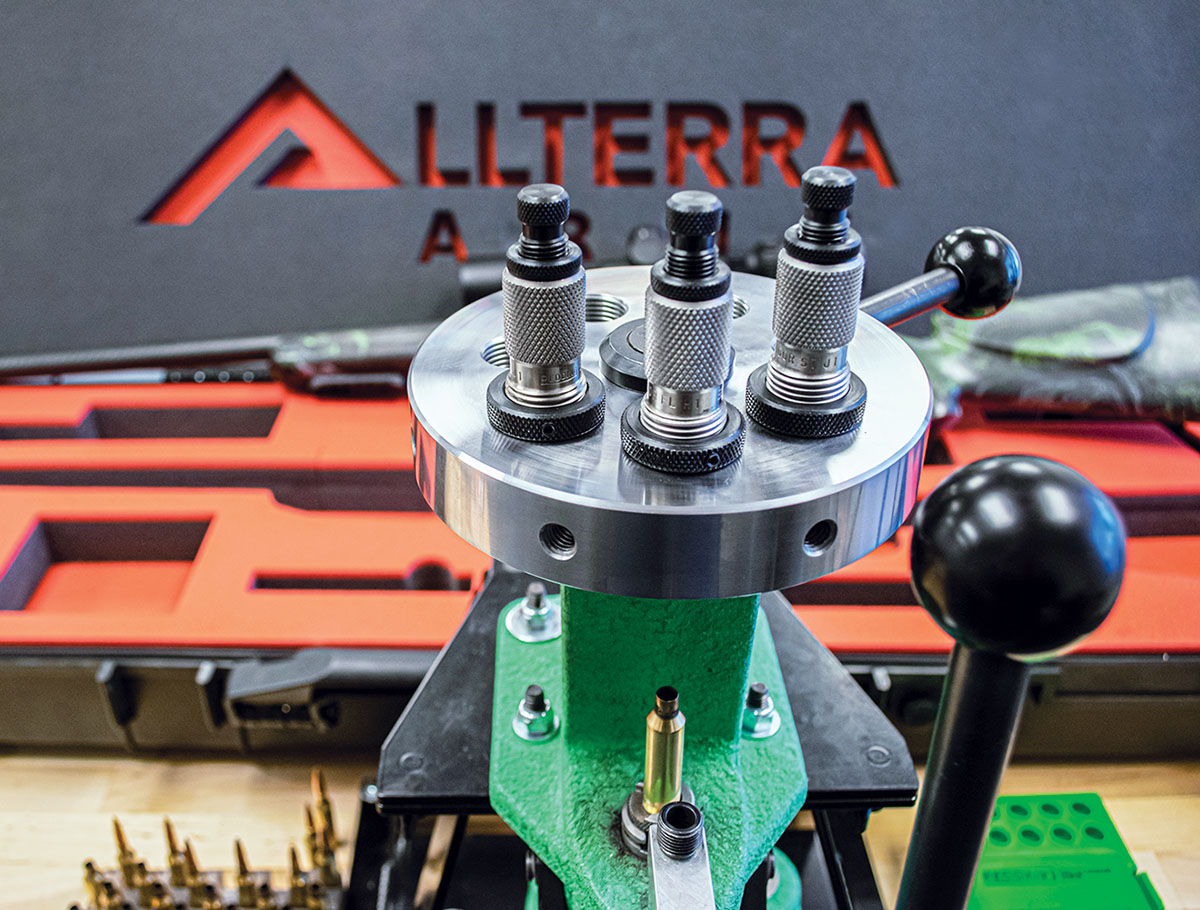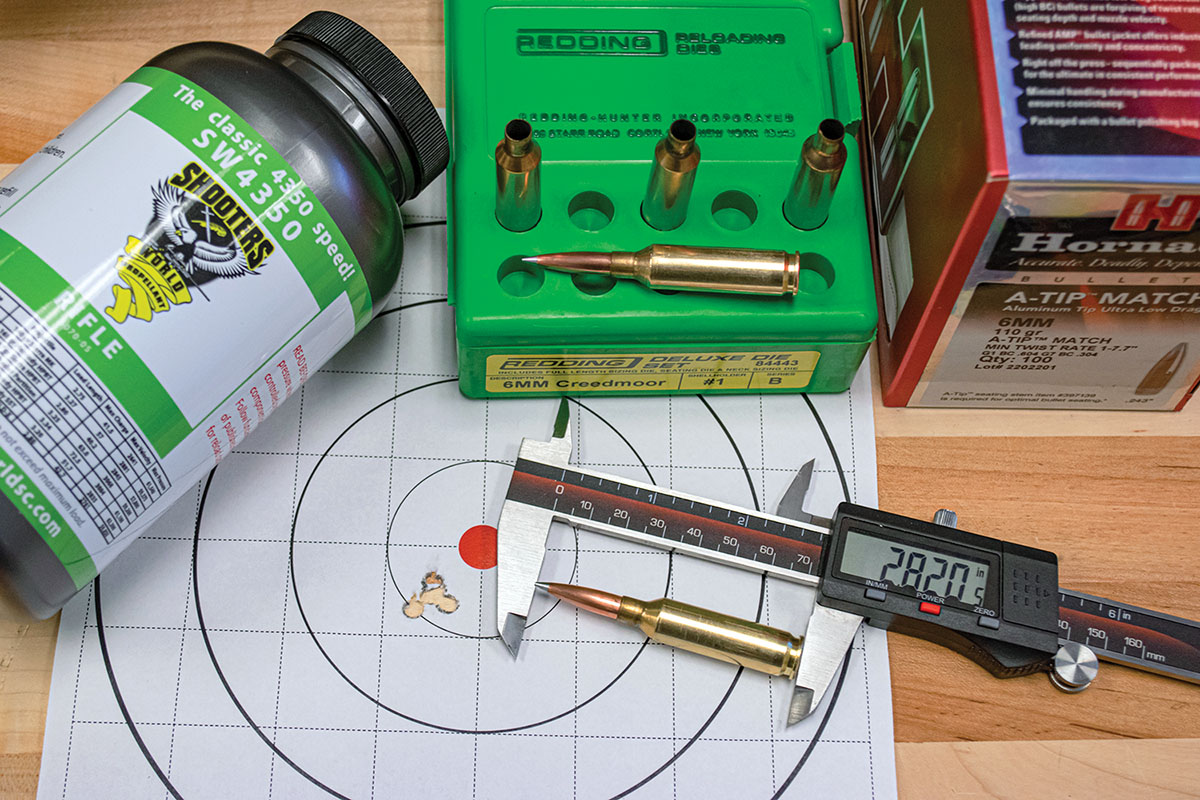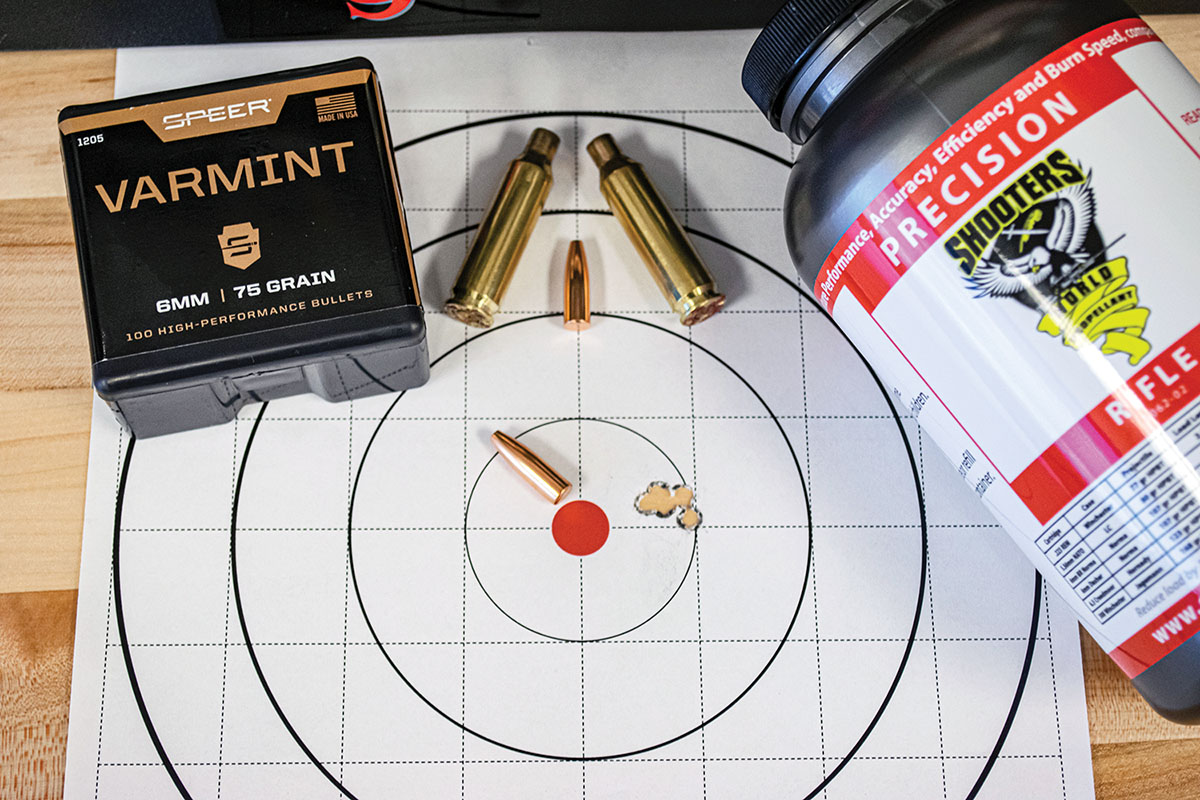Reloader’s Press
Creedmoor Sports Enhanced Press Head
column By: Jeremiah Polacek | June, 24

The first one that comes to mind is an RCBS Rockchucker II reloading press. Despite its age, it still has a place on the bench primarily for sentimental reasons. This was the first press I used and the one I learned to reload on. Sitting right next to it on the bench tall and proud, is my most used press to date, a Redding T-7 turret press. In spite of its high mileage, it cleans up nicely on the rare occasion I have time to tidy up the bench. It still cranks out precise ammunition and has been used in countless articles and videos for Wolfe Publishing. Over the years, I have grown quite fond of this press, and some of my favorite loads and most sentimental cartridges have been loaded on it. From the ammunition for Grandpa’s 1903 to that weird, wacky wildcat that most folks have never heard of, it has been a great asset to the bench and my own reloading adventures.
r

The Enhanced Press Head is machined from solid 416 stainless steel. It has seven die stations, and the threads are precision cut to the industry standard 7⁄8-14 thread pitch. Any standard die will thread in securely with noticeably less wiggle than in most presses. Installation of the press head was very easy and straight-forward. A Creedmoor Sports Redding T-7 Turret Press Upgrade kit was installed before the Enhanced Press Head. The instructions for installing both products were clear, making the installation a mere 5-minute task.
The press head rotates into position positively and securely on a newly replaced ball detent system, offering smooth operations and tactile stops at each die location. The very first thing I noticed when loading with this new setup was the hard stop against the turret and a notable lack of flex in the new press head. The press head did not flex even when some cam-over was applied.
The next step was to load up some ammunition and put this press head to the test. At the time, I happened to have a very accurate rifle from AllTerra Arms chambered in 6mm Creedmoor. I needed to work up loads for this rifle and conducting a full load development seemed like a great way to test this new press head. How repeatable would the setup be? How consistent would the ammunition be? Perhaps most importantly, how small would the best groups be? These are all things I was determined to find the answer to.

Now that the ammunition was loaded and ready to go, it was time to start testing. By running through a normal load development, there was no shortage of loads to test. As can be seen from the table, everything performed very well. Undoubtedly, everything from the rifle to the loading equipment was working well together. In testing more than 30 different loads and several powders and bullets, not a single load grouped over 1-MOA. There is no doubt in my mind that the rifle made the most significant contribution toward assembling small groups. However, I should not discount the handloading and the time and equipment used to assemble these loads. As a reference, some factory ammunition was also tested to establish a baseline for comparison. Looking at the factory load table, I can clearly see that the factory ammunition also performed very well in this rifle. However, despite this, we can also see that the best handloads outperformed the factory ammunition, especially when factoring in group size and velocity consistency. This tells us that with a little bit of load development and using good tools, we could exceed factory load performance.

If you would like to watch the accompanying video to this article, check out the video titled “Creedmoor Sports Enhanced and Adaptive Press Heads” on our YouTube channel Handloader TV.
.jpg)
.jpg)


